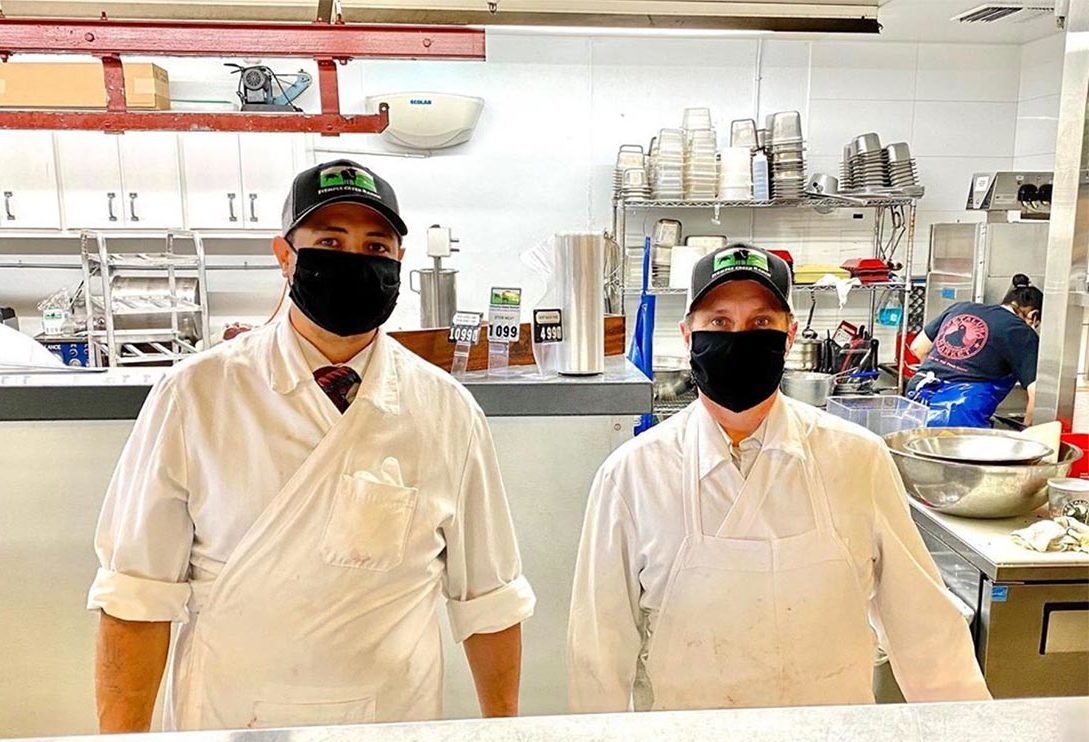Regenerative Ranching Circle NORCAL – Start of A Producers Alliance

Stemple Creek’s Petaluma Market meat department
By: Kathy Webster
 Even though the regenerative ranching community in California is small and scattered, many practitioners know one another but are often too busy tending to their animals, land, and families to communicate, share notes, and coordinate to build business sector resiliency.
Even though the regenerative ranching community in California is small and scattered, many practitioners know one another but are often too busy tending to their animals, land, and families to communicate, share notes, and coordinate to build business sector resiliency.
Sadly, but perhaps fortuitously, the COVID-19 pandemic provided a reason to reach out to each other and connect. Over the last 7 months, consumer demand in the SF Bay area has turned overwhelmingly in the direction of small local meat producers as big processors have shut down or made the news with worrisome health risks for employees. Little could we have known, as the pandemic spread throughout the country, that we would be in a unique position to work together to strengthen small-producer communications and coordination efforts.
In 2018, we began collaborating with a small group of ranchers on a shared regenerative message starting with a marketing challenge for Earth Day that year. The idea was to take marketing material to customers to show them how regenerative ranching practices benefit ecosystem health. TomKat Ranch staff provided the concept, messaging, and graphics for the ranchers to use at their farmer’s markets and on social media pages. In doing this, we hoped to connect more people to the benefits of regenerative agriculture.
Beyond that initial effort, and seeing–through our involvement with the Beef to Institute pilot program–growing demand for regenerative products from institutions, we invited a group of small- to mid-sized ranchers to discuss how we might work together to share common messages and to fulfill institutional requisites, particularly in ways that work both for the rancher’s bottom line and the budgets of large institutional buyers.
The meeting date was planned for April 8th. When COVID-19 hit, the ‘shelter-in-place’ order was issued and we canceled the in-person gathering. Within days, as restaurants and schools shut down the impact on the ranching community was felt. The initial hit was devastating as canceled orders caused inventory to pile up. But, it was followed by a second and welcome shock: a sudden increase in demand from consumers – an opportunity for many ranchers on the wholesale side to pivot their businesses to direct-to-consumer retail sales.
With all the changes and disruptions, we called a virtual meeting to reintroduce ourselves and talk about challenges and opportunities. Discussion topics included securing local and regional meat supply, processing hurdles, transporting and storing products, and eventually turned to the possibility of creating a West Coast regenerative grazers alliance to address the many roadblocks facing small producers. We also began looking into EBT payments directly to ranchers (not just at farmers’ markets) to boost sales to underprivileged communities.
We plan to continue to meet monthly as challenges from the economic impact of the COVID-19 restrictions continue. We also created a Google Group and shared Google Drive of resources and future topics for discussion going forward, we hope to connect with other regenerative ranching groups facing similar challenges in other states to learn and share what we can about increasing our effectiveness through small producer collaborations.